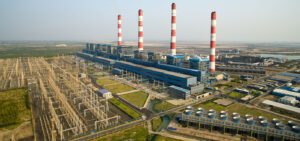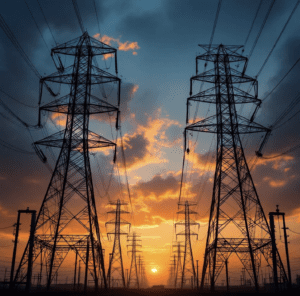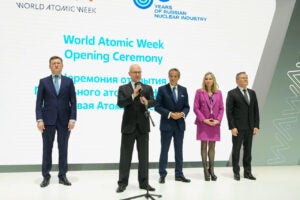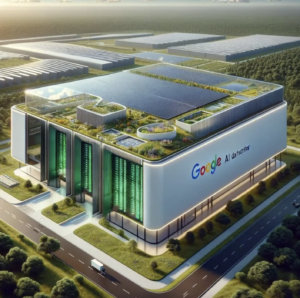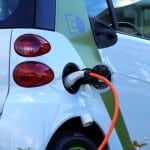India Joins IEA as an Association Country. India joined the International Energy Agency (IEA) as an association country on March 30, marking a significant move for the country into global energy affairs. The IEA said in a statement that the country is emerging as a major driving force in global energy trends, “with all modern fuels and technologies playing a part.” The Indian government said in a separate statement that it would “richly gain from the IEA’s data gathering processes, survey methodologies, and range of energy data, which could enable India in the near future to set up its own robust integrated database agency.” Association countries aren’t IEA members. The organization’s membership is comprised by 29 countries, all of which are part of the 35-nation Organisation for Economic Co-operation and Development. However, the IEA works with a number of major energy-consuming nations. Other IEA association countries are China, Indonesia, Thailand, Singapore, and Morocco. With India as its newest association country, the IEA said its operations now account for about 70% of the world’s total energy.
Siemens to New Build Cogeneration Plant in Berlin. Siemens received an order to build a new natural gas–fired combined cycle power plant with district heat extraction in the Marzahn district of Berlin from Vattenfall Europe Wärme AG, the company said on May 3. The 260-MW plant is scheduled to begin operations in 2020. Siemens’ scope of supply includes the major components—the gas turbine, steam turbine, and two electrical generators—all to be fabricated at Siemens manufacturing plants in Berlin, Görlitz, and Erfurt, Germany. It will also supply the heat recovery steam generator. The unit is to be erected in a multi-shaft configuration and will achieve a fuel efficiency rating of approximately 90%. Siemens will also sign a long-term service agreement covering the gas turbine generator set.
Indonesian Court Revokes Permit for Coal Plant in West Java. Objections from local villagers on April 19 prompted an Indonesian regional court in Bandung, West Java, to revoke an environmental permit for a 1-GW expansion of the 660-MW Cirebon coal-fired power plant (Cirebon 2) backed by Japanese firm Marubeni and the Japan Bank for International Cooperation (JBIC). The administrative court case was filed in December 2016 by six plaintiffs, including environmental groups, which argued that the West Java government inappropriately issued the permit because it lacked an amendment to a spatial plan and did not engage with the community in the environmental impact assessment process. The JBIC reportedly led a coalition of banks that signed a loan agreement to provide $1.74 billion for the Cirebon expansion. While the decision may still be appealed, the Cirebon 2 plant was slated to begin operation in 2020 as an ultrasupercritical unit developed by PT Cirebon Energi Prasarana. Marubeni in May 2016 also entered into a memorandum of understanding with Korea Midland Power, Samtan,and PT Indika Energy Internasional, to build Cirebon 3, another 1-GW ultrasupercritical plant at the site in Cirebon.
India’s BHEL Ramps Up Capacity Additions. India’s Bharat Heavy Electricals Ltd. (BHEL) in late March commissioned the second 250-MW unit based on circulating fluidized bed combustion technology at Bhavnagar Energy Co.’s thermal power project in Gujarat. Like the first unit, which was completed in May 2016, the second unit uses lignite as its primary fuel. On April 12, meanwhile, BHEL kicked off commercial operation of the second 800-MW supercritical unit at the two-unit Yeramarus Thermal Power Station owned by Raichur Power Corp. in Karnataka. BHEL commissioned the first 800-MW unit in late March. BHEL said in an April 5 statement that these projects—along with several others—are part of a renewed “thrust on accelerated project execution.” The company said that it achieved capacity additions of 45,274 MW of utility sets during the 12th five-year plan (2012–2017), comprising 46% of all capacity additions during that period. Last year alone, BHEL installed 6,317 MW in the utility segment—“which is nearly four times of the next highest achievement by any other manufacturer,” it noted.
Irish CAES Project Gets EU Grant. Irish renewable energy and energy storage group Gaelectric will get a €90 million grant from the European Union (EU) to develop the 330-MW Larne compressed air energy storage (CAES) project near Larne in Northern Ireland. The project in 2013 won designation as a European Project of Common Interest under the EU’s program to promote transboundary energy infrastructure. It will store energy in the form of compressed air in specially engineered caverns created within geological salt deposits that are unique to the east Antrim coast on the island of Ireland, in other locations in the UK, and on the European mainland. The project received €15 million in EU grants in 2015 and 2016 for the environmental impact assessment and planning activities, as well as front end engineering design.
ABB Wins Orders for HVDC Technology in DRC, UK, and France. ABB won two orders for high-voltage direct current (HVDC) lines during April and May. On May 4, it won an order worth more than $30 million from Société nationale d’électricité (SNEL), the national electricity company of the Democratic Republic of the Congo (DRC) for a partial upgrade of the Inga-Kolwezi HVDC power transmission link to increase its transmission capacity from 520 MW to 1,000 MW. Refurbishment of the line, which ABB built in 1982 and upgraded with new thyristor valves, high-voltage apparatus, and its MACH control and protection system in 2009, will transmit power from the Inga hydropower station on the Congo River to the mining district of Katanga in the south-east of the country. The upgraded 1,700-kilometer link will also export excess power from the plant to power strapped Southern African Power Pool countries. The contract is part of the FRIPT project financed by Glencore and managed by Congo Energy, a subsidiary of Forrest Group International.
On April 7, ABB also won a $295 million order from UK grid operator National Grid and Réseau de Transport d’Electricité (RTE), the French network owner and operator, to provide two HVDC converter stations to a line that will interconnect the French and UK grids. The 1,000-MW subsea link will run from Chilling, Hampshire, on the southern coast of England to Tourbe in northern France, covering a distance of 240 km across the English Channel. ■
—Sonal Patel is a POWER associate editor


